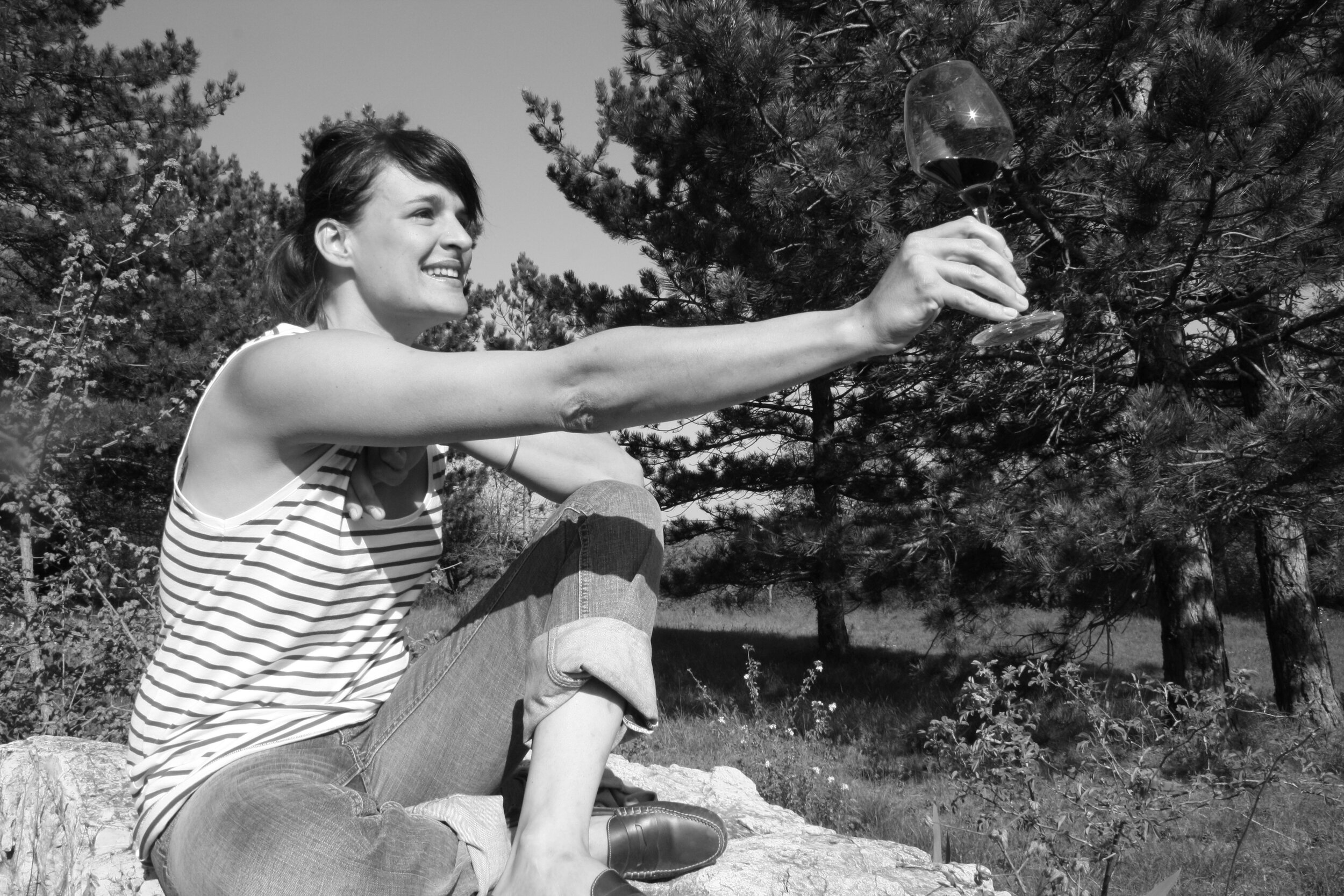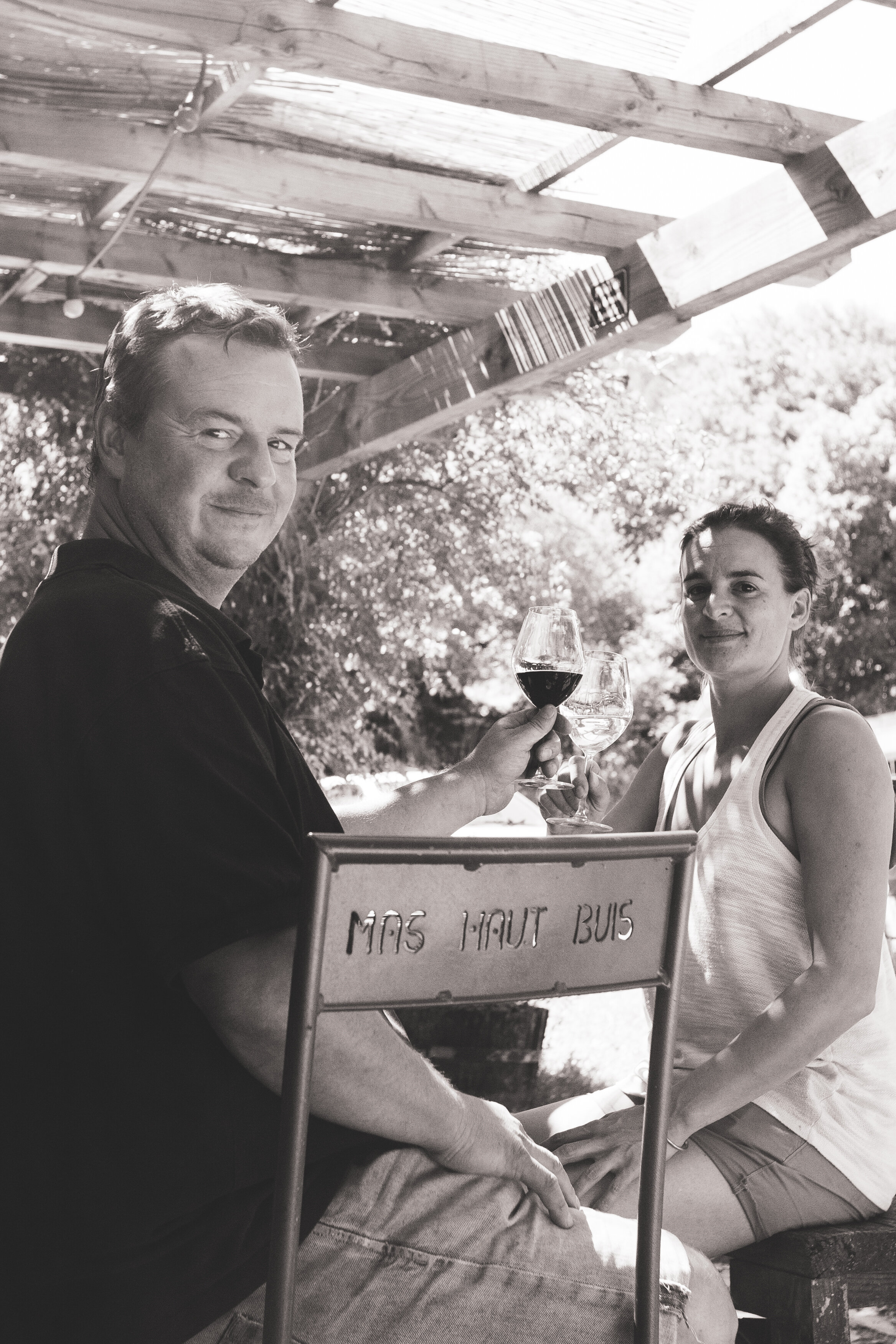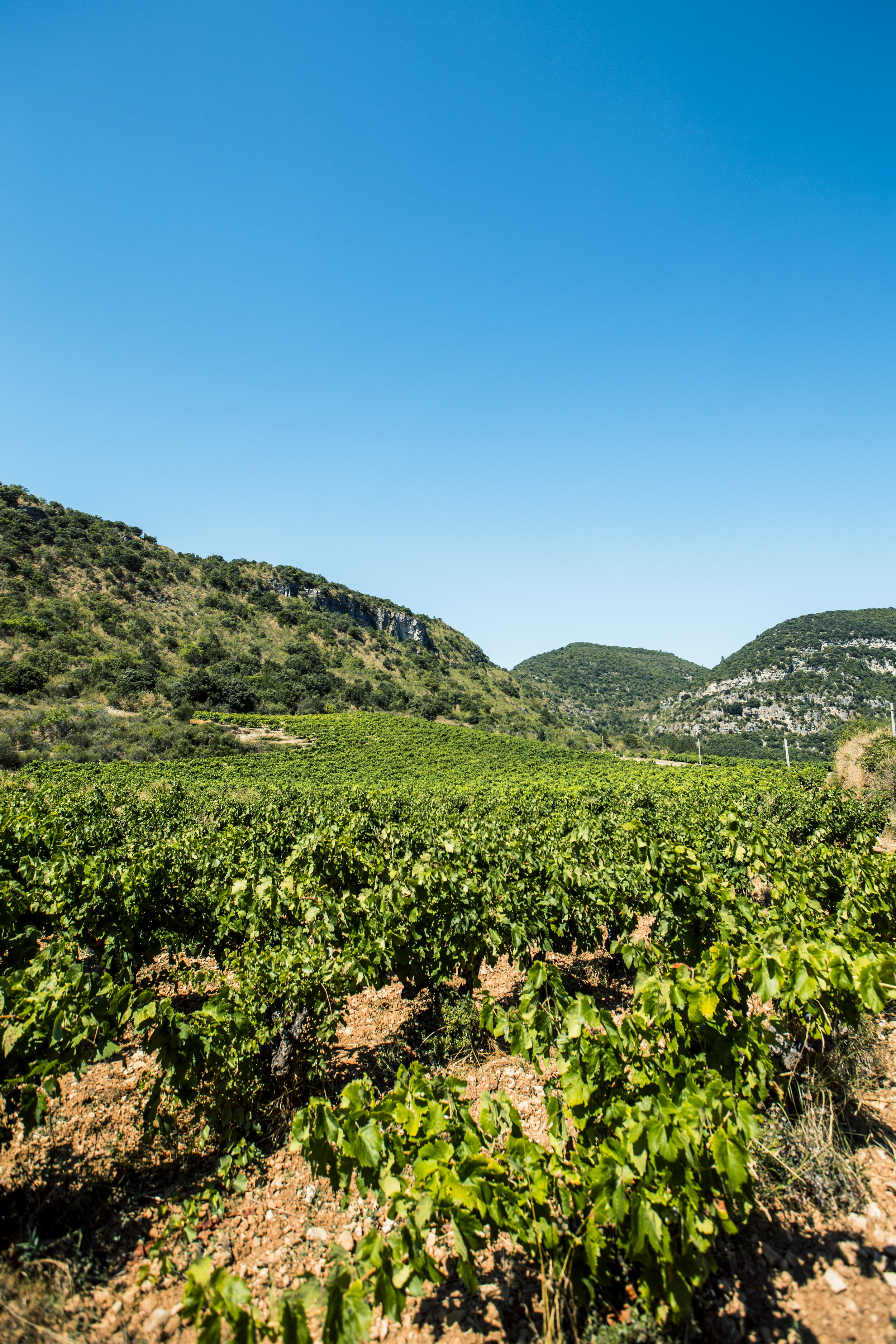






clos maïa
Who: Géraldine Laval
Where: La Vacquerie-et-Saint-Martin-de-Castries (Languedoc, France)
What grapes: Chenin Blanc, Roussanne, Terret Bourret, Grenache Gris, Grenache, Syrah, Carignan, Cinsault, Oeillade, Terret Bourret Noir, Aramon
Key facts: Géraldine has 5.4 hectares ( 4ha to red & 1.4ha to white ) in the Terrasses du Larzac appellation which she maintains without any chemical treatments in order to obtain an organic certification. She believes in making wine with as little winemaker intervention as possible.
Webpage: https://www.closmaia.fr
Instagram: @closmaia
Clos Maïa Blanc, Pays d’Hérault IGP
Viticulture: Organic
Soil type: Chalky Clay
Elevation: 400m - 500m
Grapes: Grenache Gris, Roussanne, Chenin, Terret Bourret
Method of fermentation: Manual harvest & direct pressing in a pneumatic press followed by a settling of 24 hours by gravity. Fermentation begins in cement vats & once the wine begins to bubble it is moved into demi-muid ( 500 l ) for fermentation which can take up to a full year to complete.
Bottles Made: 4,000
Average age of the vines: 25 years
Clos Maïa Rouge, Terrasses du Larzac AOP
Viticulture: Organic
Soil type: Limestone Scree
Elevation: 400m - 500m
Grapes: 90% Grenache, 10% Field Blend: Oeillade, Terret Bourret Noir, Cinsault, Aramon
Method of fermentation: Manual harvest. Whole cluster, destemmed, native yeast fermentation in cement tanks. Malolactic fermention & aging for 18 months in Austrian lightning 20 hLs.
Bottles made: 5,000
Average Age of the Vines: 65 years
Clos Maïa, Le Petit Clos Maïa, Pays d’Hérault IGP
Viticulture: Organic
Soil type: Chalky Clay
Elevation: 400m - 500m
Grapes: Syrah, Cinsault, Carignan
Method of fermentation: Manual harvest. Whole cluster, destemmed, native yeast fermentation in cement tanks. Refined in cement tanks for 1 year before being bottled by gravity
Bottles made: 11,560
October 21st, 2019
In advance of our visit I was apprehensive. The email exchange with Geraldine Laval from Clos Maia had been terse. Her small estate has risen quickly to become a critical darling in the French wine press, a farm defining the upper limits of quality in fashionable Terrasses de Larzac. So I knew there wouldn’t be much wine to sell. And it never helps to be strangers from a part of America no French person has ever heard of, representing a company with a history of selling mostly Italian wines. So much to fret about! I really was in my element. To compound my natural state of neurosis, after very direct instructions to arrive on time, we were going to be late! And I was to blame. I parked the car too early. We wandered around a sleepy small village, hopelessly detoured by the address of Clos Maia’s bottle storage warehouse. The warehouse is a small unmarked building disconnected by 500 meters from the actual winery. Even when we got back in the car and drove to the correct address, I had my doubts. Clos Maia shares a building with Mas de Haut-Buis, the winery of Gerdine’s husband Olivier. The structure is labeled with the latter winery’s name. Two men were labelling bottles in the doorway. Geraldine is not a man. It seemed all wrong.
It only took a few moments to dispel my dread. Grey skies and the omnipresent threat of rain during our stay in the Languedoc dissipated in the conviviality of Geraldine, and the reassuring presence of her wines.They are so good! Technically correct but more importantly vivid, transmitting with clarity the exceptional terroir that has justifiably given prominence to the rocky, windswept and dramatic Terrasses de Larzac region.
We spent an hour tasting through the consistently excellent bottles that are currently available from these two estates. Geraldine’s sharp mind and perceptiveness on a range of wine topics (natural wine, Bordeaux and Burgundy, tasting on non-fruit days on the biodynamic calendar, etc.) made all the tension and stress of meeting with a prospective new winery evaporate. The proof is in the bottle. All things being equal, an intellect as honed as her’s is going to make noteworthy wine.
The specific fields of Clos Maia receive 350mm more rain than the rest of the AOC, but are on phenomenally stony calcareous soil, so the vines have access to moisture even during drought years (like 2017 and 2019) without any significant threat of mold/fungus in the vines. It’s a great place to make organic wine, sunny and cool at night, even when daytime temperatures soar.
First we tasted the 2017 Clos Maia “le Petit” which is a blend of Syrah, Grenache, and Carignan done solely in cement tank. The wine is made from the same terroir utilized by our friends at Pas de l’Escalette (more on them later.) So clay soil, with larzac (stone) and calcareous cliffs rising dramatically from the fields. As I mentioned it was cloudy, and not a fruit day in the biodynamic calendar. The aromas of “le petit” were muted, but on the palate the wine became expressive.
Next we tried the 2017 Clos Maia, made from one tiny parcel of (mostly) old-vine Grenache peppered with little bits of Oeillade, Cinsault, Terret Bourret Noir, and Aramon. All the grapes from the field are co-fermented with their stems in cement tank, before spending one year in 20-hectoliter foudre. It’s easy to pick up a sense of longevity, even timelessness in this wine. In spite of climatic conditions, it was more aromatic than the “le Petit.” To my nose it smelled of curing tobacco leaves and briny black olives.
We detoured into Olivier’s wines. The 2017 Haut Buis Costa Claude is very open in comparison to Geraldine’s reds. Olivier used to pick wild salad greens in this field of old Grenache and Carignan. It’s tasty!
Geraldine’s white wine takes time to finish fermentation, sometimes up to two years. She was mentored by Olivier Julien, which partly explains why her blanc is so wonderful. The Mas Julien blanc is iconic, the estate has been the pinnacle of quality in the Languedoc for at least two decades. Julien Zernott and Delphine Rousseau from Pas de l’Escalette drew Geraldine to Terrasses de Larzac, but she also completed a stage at JL Chave in the northern Rhone, and with Olivier Leflaive in Burgundy. That’s plenty of street cred, but it’s the intense white peach aroma in her Clos Maia blanc that tells me everything I need to know about this person and her farm. A blend of Terret blanc, Chenin, Grenache Gris, and Roussanne, it manages to eclipse the really quite appealing 2017 Haut-Buis Les Agrunelles (the name means wild plums) made by her partner. The Les Agrunelles is a blend of Grenache Blanc, Chardonnay, and Roussanne, fermented and aged in 500 liter oak demi-muid. It’s fullness and cool mouthfeel will have me returning for a glass come summertime in N.C.
All the farming at Mas Haut Buis and Clos Maia is organic. There’s not much technological wizardry at this address. Thirty-five to forty milligrams per liter of free sulfur is the normal range in Geraldine’s wines, enough to shield the grape must during fermentations from brettanomyces, but far less than most industrial wine, and less than one would encounter in many common foods.
We went back out into the rain, to visit Pas de l’Escalette and see the vines of both that domaine and Clos Maia. Before departing I stumbled into their residence and met the family dog. Geraldine and Olivier’s home is attached to the winery: step through an ordinary door and you move from bottling line to the kitchen. How’s that for zero kilometer commute!



